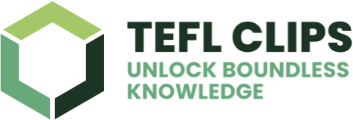Unlock Boundless Knowledge
-

Unlocking Your Online Business Potential
Many entrepreneurs work hard on their online businesses yet see little growth because they lack a clear strategy for turning casual visitors into loyal customers. This framework lays out a step-by-step approach to build a thriving online presence, focusing on how to guide strangers into becoming devoted fans and repeat buyers over time. It connects…
-

Digital Marketing Strategies for Financial Services
The digital revolution is transforming the financial industry, reshaping how banks and financial institutions connect with customers. As tech-savvy audiences expect seamless and convenient online experiences, traditional marketing methods are no longer enough to stay competitive. The new marketplace demands clear, efficient, and customer-focused digital tools. Financial institutions must now prioritize digital transformation to improve…
-

Lee Kuan Yew visionary leadership shaping modern Singapore future
Lee Kuan Yew stands as the transformative architect of modern Singapore, whose visionary leadership shaped the destiny of this small island nation. Born into a middle-class family on September 16, 1923, Lee demonstrated exceptional intellect and leadership qualities early on. His journey from the turbulence of the post-World War II era to becoming the prime…
-

Navigating the World of Management Consulting vs Strategy Consulting
In the dynamic world of consulting, understanding the distinction between management consulting and strategy consulting is crucial. These two paths, though related, can lead to vastly different experiences and opportunities. As an experienced SEO expert and professional blogger, I’m here to provide a comprehensive and SEO-optimized guide to help you navigate this landscape and make…
-

5 Red Flags Signaling It’s Time to Leave Your Job
Choosing the right time to leave a job is a delicate decision that can significantly impact your career trajectory. While some reasons for leaving a job are obvious, others may not be as apparent. In this comprehensive article, we’ll explore five critical red flags that signal it’s time to consider moving on from your current…
-

5 Essential Tips to Help You Crush the MCAT and Get Into Med School
The MCAT is one of the biggest obstacles standing between premed students and medical school acceptance. As the popularity of medicine rises, the MCAT is becoming increasingly competitive. Every year, the average MCAT score for accepted applicants trends upwards, raising the bar for incoming students. If your dream is to become a doctor, performing well…
-

Uncovering the Hidden Truths Behind Life’s Synchronicities
Have you ever experienced strange coincidences or repeated patterns in your life that seemed too meaningful to be random chance? If so, you may have encountered what psychologist Carl Jung termed “synchronicities” – mysterious and illogical occurrences that reveal hidden truths about your path. In this comprehensive guide, we will explore the deeper significance of…
-

Passing the CISSP Exam in One Week: My Cram Study Tips
The CISSP exam is considered the gold standard in IT security certifications. Many cybersecurity professionals work for years to pass this notoriously difficult test. So when I decided to cram for the CISSP in just one week, I knew I was in for a challenge. In this blog post, I’ll share my CISSP exam cram…
-

The Top 5 Free Cyber Security Certifications for Beginners
Getting started in the exciting and lucrative field of cybersecurity can seem daunting, especially for those with limited budgets for training and certifications. Thankfully, there are a plethora of free cybersecurity training opportunities available to help you gain fundamental knowledge and skills without going broke. In this comprehensive guide, we will explore the top 5…
-

Title: The Cutting Edge Shield: A Deep Dive into Endpoint Detection and Response
Every 39 seconds, a cyberattack occurs somewhere globally, impacting millions of individuals and organizations annually. In the face of this constant digital onslaught, endpoint detection and response (EDR) has emerged as a formidable force in cybersecurity. This advanced system continuously monitors endpoints, detects threats, and responds swiftly to eliminate attacks before they can infiltrate networks.…
-

Surviving Your First Redundancy: A Complete Guide for Employees in England
Losing your job due to redundancy can be an emotionally and financially stressful experience. However, knowing what to expect and how the process works can help you feel more in control. This comprehensive guide will explain everything you need to know about redundancy in England, from spotting the warning signs to negotiating your settlement agreement.…
-

The Significance of ISO 13485 Certification for Medical Devices
Medical devices play a crucial role in healthcare, from diagnostic equipment to implantable devices that can improve quality of life or even save lives. However, if medical devices are poorly designed or manufactured, they can also put patients at risk. That is why quality management and regulatory compliance are so important for medical device companies.…
Need Any Helps?
